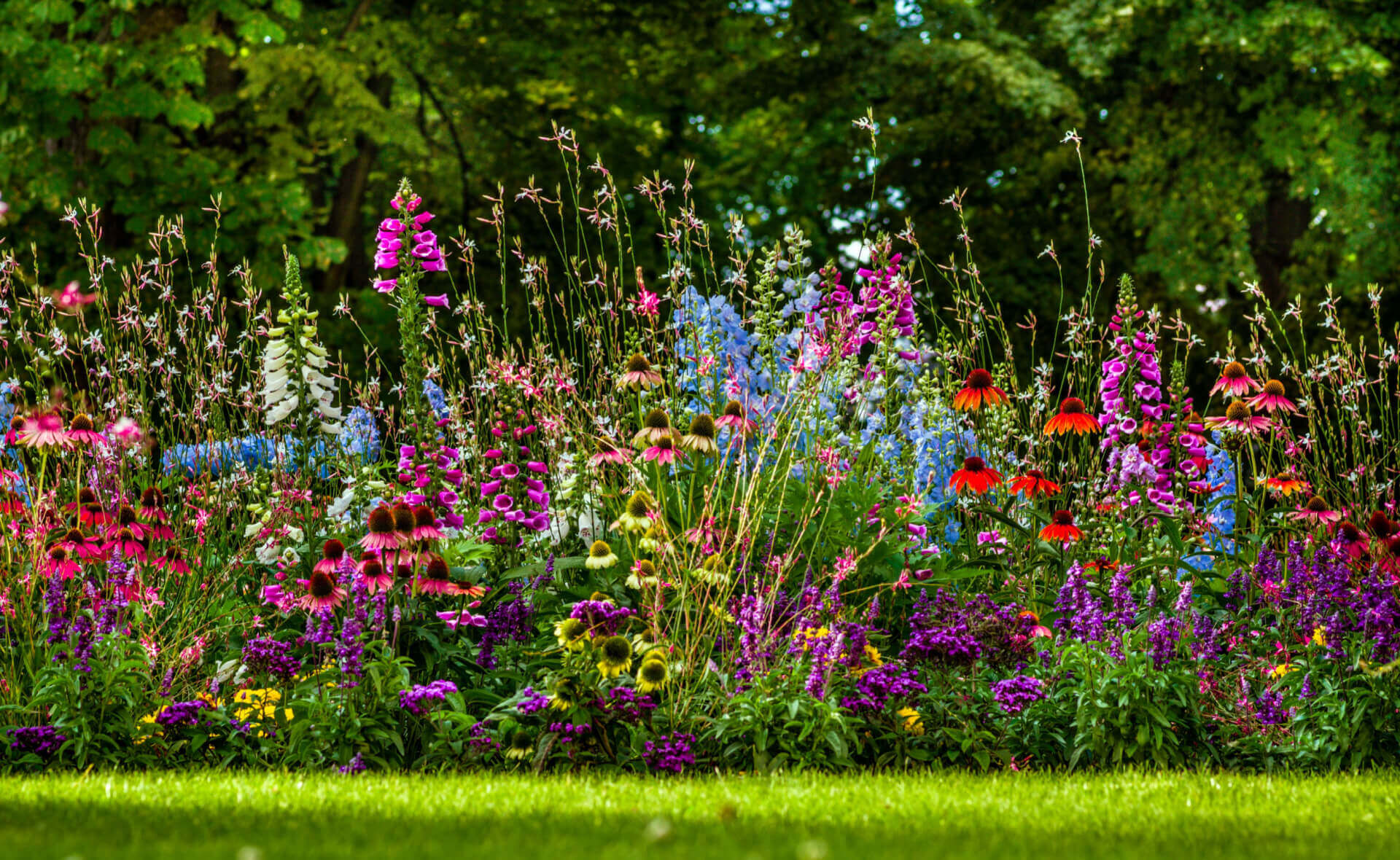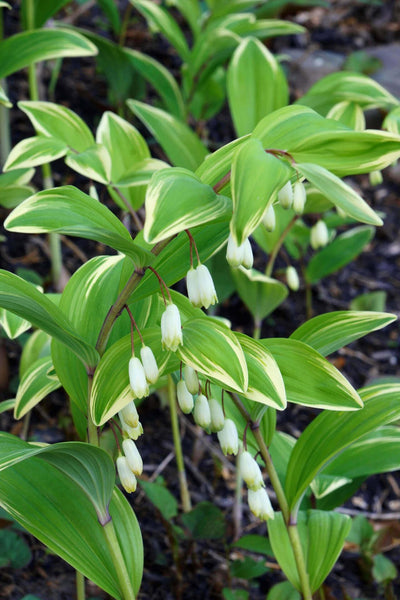Naturalistic Planting and the New Perennial Movement
As we enter 2024, gardening enthusiasts and landscape designers are poised to embrace a new gardening trend that combines the beauty of naturalistic planting with the principles of the New Perennial Movement. This trend indicates a move away from meticulously maintained gardens towards more relaxed, ecologically friendly landscapes that imitate the beauty and diversity of natural ecosystems. In this article, we will delve into the critical elements of this trend, explore the role of some noteworthy plants such as hosta, Butterfly Milkweed, yellow trillium, and Solomon's seal plant, Bugleweed Plant, and provide tips on how to incorporate these elements into your garden.
Naturalistic Planting: A Return to Nature
Gardening trends constantly evolve, reflecting values, aesthetics, and environmental concerns. In 2024, one of the most notable trends is the resurgence of naturalistic planting, which harkens back to a more unstructured and wild gardening style. Naturalistic planting seeks to create gardens that mimic the beauty and functionality of natural ecosystems while minimizing the environmental impact and maintenance requirements associated with traditional gardens.
Vital Elements of Naturalistic Planting:
- Biodiversity: One of the core principles of naturalistic planting is the promotion of biodiversity. Instead of relying on a limited selection of ornamental plants, gardeners are encouraged to include native and non-native species to support pollinators and other wildlife. This approach results in gardens that are not only beautiful but also ecologically vibrant.
- Minimal Maintenance: Naturalistic gardens are designed to be low-maintenance, requiring less water, fertilizer, and pest control. This is achieved through careful plant selection, the use of drought-tolerant species, and a willingness to embrace the imperfections of nature.
- Seasonal Interest: Naturalistic planting emphasizes using plants that provide interest throughout the seasons. This ensures that the garden remains visually appealing and dynamic year-round rather than having a brief period of peak bloom followed by months of dormancy.
- Sustainability: Sustainability is a cornerstone of this trend. Gardeners are encouraged to use organic gardening practices, reduce synthetic chemicals, and create habitats supporting local ecosystems.
The New Perennial Movement: A Paradigm Shift
The New Perennial Movement, championed by landscape designer Piet Oudolf, has gained momentum over the past few decades. This movement reimagines gardens as dynamic and ever-changing compositions that celebrate the beauty of perennial plants in their naturalistic setting. The New Perennial Movement aligns perfectly with the naturalistic planting trend, and together, they offer a fresh and exciting approach to garden design.
Fundamental Principles of the New Perennial Movement:
- Plant Selection: The New Perennial Movement prioritizes using perennial plants with visual appeal and ecological value. These plants are carefully chosen for their ability to thrive in specific climates and provide year-round interest.
- Structured Chaos: Unlike traditional formal gardens, New Perennial gardens embrace a sense of "structured chaos." Plants can intermingle and self-seed, creating a more natural and less controlled appearance.
- Seasonal Dynamics: The New Perennial Movement recognizes that a garden's beauty is not static but evolves throughout the seasons. This philosophy encourages gardeners to appreciate the changes in their gardens and find beauty in every stage.
- Sustainability: Sustainability is a fundamental aspect of the New Perennial Movement. These gardens are inherently eco-friendly by selecting hardy, climate-appropriate plants and reducing the need for maintenance.
Noteworthy Plants for Naturalistic Planting and the New Perennial Movement
Incorporating a diverse range of plants is crucial to naturalistic planting and the New Perennial Movement. Here, we will explore four notable plants-hosta, creeping phlox, yellow trillium, and Solomon's seal plant-and discuss how they can contribute to this gardening trend.
Hosta (Hosta spp.):
Hostas are beloved for their lush, variegated foliage and adaptability to different garden conditions. They are a perfect addition to naturalistic gardens, providing texture, color, and structure throughout the growing season. Hostas are especially valuable in shaded areas, where they can thrive and create a rich, layered look.
Incorporating Hostas:
- Plant hostas in groupings of varying sizes to create a naturalistic feel.
- Choose hosta varieties with different leaf shapes, sizes, and colors for visual diversity.
- Allow hostas to intermingle with other shade-loving perennials like ferns and wild ginger for a more natural appearance.
Creeping Phlox (Phlox subulata):
Creeping phlox is a low-growing, ground-covering perennial that produces a breathtaking carpet of flowers in spring. With its delicate blooms in pink, purple, and white shades, creeping phlox adds color to naturalistic gardens and is an excellent choice for edging pathways or spilling over rock walls.
Incorporating Creeping Phlox:
- Plant creeping phlox in well-drained soil in full sun to partial shade.
- Combine different phlox varieties to create a tapestry of colors.
- Allow creeping phlox to weave its way among other ground covers and native grasses for a harmonious look.
Yellow Trillium (Trillium luteum):
Yellow trillium, also known as yellow wake-robin, is a native woodland wildflower with elegant, tripartite leaves and distinctive, yellow, three-petaled flowers. This plant adds a touch of understated beauty to naturalistic gardens, particularly in shaded or woodland settings.
Incorporating Yellow Trillium:
- Plant yellow trillium in moist, well-drained, humus-rich soil.
- Group them in clusters to create a striking display.
- Combine yellow trillium with native woodland plants like bloodroot and wild ginger for a woodland garden aesthetic.
Solomon's Seal Plant (Polygonatum spp.):
Solomon's seal is a graceful and arching perennial known for its distinctive, dangling, white or greenish-white flowers and delicate foliage. This plant is well-suited to naturalistic gardens, as it can thrive in shaded areas and adds an air of elegance to the landscape.
Incorporating Solomon's Seal Plant:
- Plant Solomon's seal in shaded to partially shaded locations with moist soil.
- Use its arching stems to create naturalistic, layered effects.
- Pair Solomon's seal with other shade-loving perennials like ferns, hostas, and astilbes to create a lush woodland garden.
Designing Your Naturalistic Garden
Now that we've explored the concept of naturalistic planting and the New Perennial Movement and discussed the role of hosta, creeping phlox, yellow trillium, and Solomon's seal plant, it's time to consider how to design your naturalistic garden for 2024 and beyond.
- Assess Your Space: Evaluate your garden's conditions, including soil type, sunlight exposure, and moisture levels. This will help you select appropriate plants and design your garden accordingly.
- Choose Native and Non-Native Plants: Embrace a mix of native and non-native plants to encourage biodiversity and create a visually dynamic garden. Native plants often support local wildlife and are well-suited to your region's climate.
- Create Plant Communities: Instead of planting individual specimens, group plants with similar needs and appearances to mimic natural plant communities. This approach enhances the overall aesthetic and reduces maintenance.
- Embrace Imperfections: Allow your garden to evolve naturally, embracing the occasional weed or self-seeding plant. These imperfections contribute to the authenticity of a naturalistic garden.
- Plan for Seasonal Interest: Select plants that provide interest throughout the seasons. Consider foliage texture, bloom times, and seed heads to ensure year-round beauty.
- Implement Sustainable Practices: Reduce your garden's environmental impact by adopting sustainable gardening practices. Use organic fertilizers, limit water usage, and minimize the use of synthetic chemicals.
- Encourage Wildlife: Include bird feeders, birdbaths, and bee-friendly plants to attract and support local wildlife. Creating a habitat for pollinators and other creatures adds depth to your garden.
- Garden in Layers: Create vertical interest by incorporating plants of varying heights, from ground covers to tall perennials and small trees or shrubs. Layering plants adds depth and complexity to your garden design.
In 2024, the gardening world is embracing the trend of naturalistic planting and the principles of the New Perennial Movement. This shift towards more ecologically friendly, low-maintenance gardens that celebrate the beauty of nature is an exciting development for gardening enthusiasts and landscape designers alike. Suppose you want to create a beautiful and eco-friendly oasis in your garden. Why not consider incorporating lovely plants such as hosta, creeping phlox, yellow trillium, and Solomon's seal? You can enjoy your naturalistic paradise while doing your part for the environment! So, get ready to embrace the beauty of nature in your garden as we embark on this gardening trend for 2024 and beyond.


